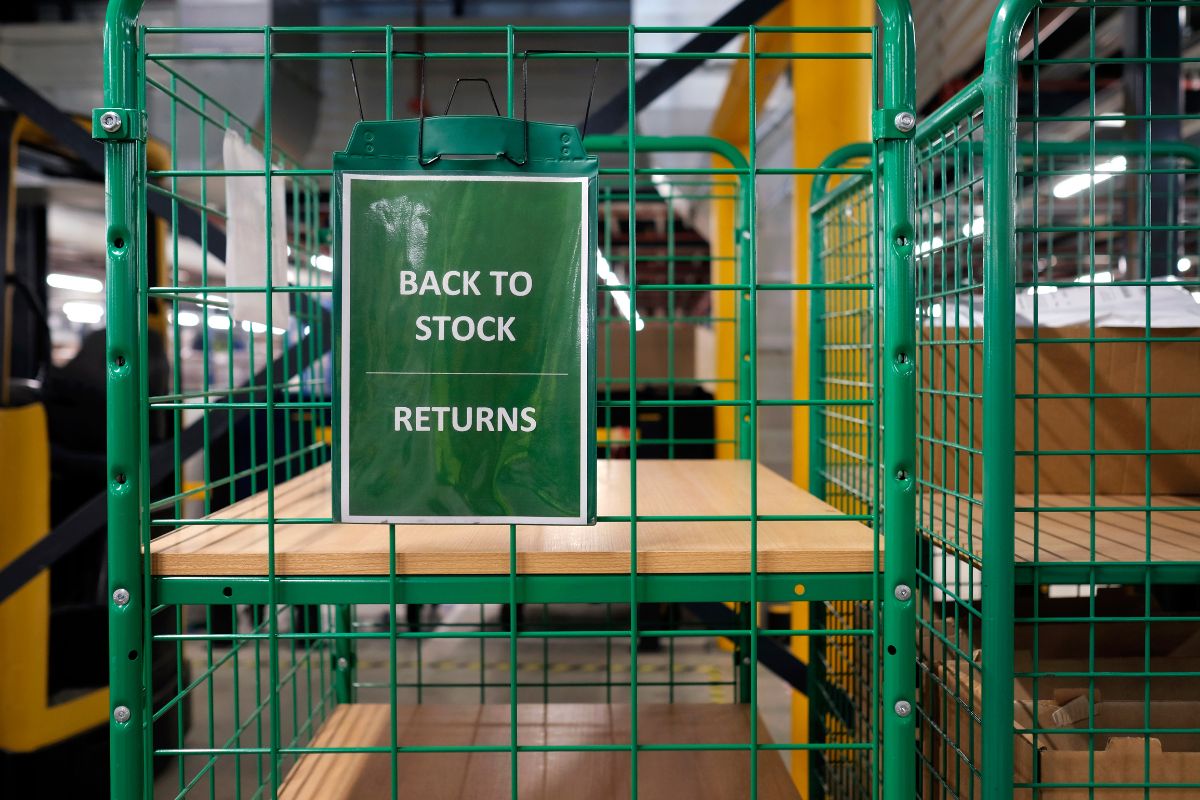
As the holiday season approaches, most operations managers in ecommerce, shipping, distribution, logistics, and transportation are already gearing up for the massive influx of orders. But while holiday orders are top of mind, there’s another equally critical period lurking just around the corner: the post-holiday returns season. For businesses, especially those in ecommerce, returns can make or break the post-holiday recovery phase.
Returns are inevitable. In fact, studies show that up to 30% of online purchases are returned, and after the holidays, this number can skyrocket. Whether it’s due to wrong sizes, duplicate gifts, or simply buyer’s remorse, handling returns efficiently is essential to maintaining profitability, customer satisfaction, and operational efficiency.
Let’s explore some actionable strategies to help operations managers like you prepare for the upcoming returns season, ensuring you’re not only ready for the rush but able to navigate it smoothly.
- Forecasting and Data Utilization: Know What’s Coming
Preparation starts with understanding the volume and nature of returns your business might face. The more data you have at your disposal, the better equipped you’ll be to handle the returns season without being blindsided.
- Analyze Last Year’s Trends: Pull data from previous holiday seasons to identify patterns in return rates, common reasons for returns, and timelines. Knowing when the peak return periods occurred and which products had the highest return rates will give you a good starting point for planning this year’s operations.
- Collaborate with Sales and Marketing Teams: Keep an open line of communication with your sales and marketing teams. They can provide insights on which products were heavily promoted, new product launches, or changes in sales strategies that might affect return volumes.
- Monitor Industry Trends: Beyond your internal data, monitor broader industry trends in shipping and ecommerce. For example, if certain types of products are being returned more frequently industry-wide, you can anticipate similar patterns in your business.
The goal is to leverage all the data you have available to create a detailed forecast. This forecast will help guide workforce planning, logistics, and inventory management.
- Staffing Strategies: Optimizing Your Workforce for the Returns Rush
The influx of returns after the holidays can put immense pressure on your workforce, so having a flexible and responsive staffing strategy is critical.
- Hire Temporary Staff for Flexibility: Consider hiring temporary workers to assist with sorting, processing, and managing returns. Seasonal employees can give you the flexibility to scale your workforce up or down depending on demand. Workforce solutions like iJility are invaluable for finding qualified, flexible labor solutions quickly and efficiently, allowing you to adapt to the ebbs and flows of the returns season.
- Cross-Train Your Employees: One way to enhance operational flexibility is through cross-training. Equip your employees with the skills to handle different tasks across your logistics and warehousing operations. This way, if one department becomes overwhelmed (say, returns processing), you can temporarily reassign staff from other areas to assist, without needing to rely exclusively on temp workers.
- Use Data to Staff Strategically: Referring back to your returns forecast, staff according to the predicted workload. Some days will be busier than others, and staffing should reflect that. Aligning staff schedules to peak returns days can help minimize bottlenecks.
Ultimately, the returns process is a marathon, not a sprint. Preparing a flexible, well-trained workforce will help you maintain efficiency and morale as the rush unfolds.
- Streamlining the Returns Process: Efficiency is Key
When it comes to handling post-holiday returns, speed and accuracy matter. An efficient process not only minimizes operational costs but also enhances the customer experience, leading to improved customer retention.
- Implement a Clear Returns Policy: Ensure that your returns policy is clearly communicated to your customers and your team. A well-defined policy can prevent unnecessary returns, streamline the process, and avoid confusion. Outline key aspects such as return windows, restocking fees, and refund timelines. When customers know what to expect, your team will have fewer headaches to manage.
- Automate Where Possible: Technology can be your best ally during the returns season. Use automation tools to manage return labels, process refunds, and keep track of inventory levels. Automating repetitive tasks frees up your team to focus on more complex parts of the returns process, such as inspecting and restocking items.
- Standardize Returns Handling: Having a standardized workflow for handling returns is crucial. This could involve steps like categorizing returned products (damaged, resellable, or defective), inspecting each item, restocking, and initiating refunds. When your team knows exactly how to handle each type of return, the process becomes much faster and more efficient.
Efficiency in your returns process translates to quicker restocking, faster refunds, and, ultimately, happier customers.
- Inventory Management: Keep Products Moving
Handling returns effectively is also about knowing how to manage your inventory flow. Every return is a piece of inventory that must be inspected, processed, and either restocked or discarded – and delays in this process can lead to stock imbalances.
- Prioritize Resellable Returns: Not all returned items are unsellable. Prioritize getting resellable items back into your inventory as soon as possible. With many products still in high demand post-holiday, a quick restock can lead to new sales opportunities.
- Use Inventory Management Software: Track returned products through your inventory management system to ensure you know exactly what’s available to sell. A comprehensive software solution can help you monitor real-time stock levels and identify trends in returns that might signal issues with particular products or suppliers.
- Optimize Storage and Organization: If your warehouse is not organized for quick returns processing, now is the time to fix that. Designate clear areas for incoming returns, inspection, and restocking. This minimizes handling times and prevents clutter, allowing for faster reintegration of products into your stock.
- Prepare for Reverse Logistics: Efficient Transportation and Handling
When talking about returns, reverse logistics is a significant component. Reverse logistics encompasses all the steps involved in moving returned products from the customer back to the seller or manufacturer.
- Plan for Reverse Logistics Early: Just as you plan for outbound shipments during the holiday season, you need a plan for handling reverse logistics during the returns season. Work with your transportation providers to ensure they are prepared for increased return volumes.
- Optimize Shipping and Handling Costs: Returns can eat into your profit margins, especially if you’re handling shipping costs. Consider partnering with carriers that offer discounted rates for returns or explore consolidation options to reduce transportation costs.
- Communicate with Customers: Keep your customers informed about the return process, from when they should expect their return label to when their refund will be processed. Proactive communication reduces inbound customer inquiries and helps streamline the process.
- Review and Adapt: Post-Season Analysis for Future Success
Once the rush subsides, it’s time to review how well your preparations worked. Conduct a thorough post-mortem on your operations, looking at areas where you excelled and where there’s room for improvement.
- Analyze Returns Data: Collect data on return rates, processing times, customer feedback, and overall costs associated with returns. This data will be invaluable in refining your strategy for next year’s returns season.
- Adapt Your Policies and Procedures: Were there certain products that consistently got returned due to sizing issues? Perhaps your returns policy needs tweaking to prevent unnecessary returns next season. Make adjustments to both internal operations and customer-facing policies as needed.
Preparing for the returns season isn’t just about damage control; it’s about seizing the opportunity to turn a potentially chaotic period into a well-oiled operation. By planning ahead, optimizing your workforce, and streamlining your returns process, you can ensure that this post-holiday season runs as smoothly as possible. And remember, every return is a chance to win customer loyalty through efficient service and clear communication.
With the right preparation, the returns season can be an opportunity to improve operations and strengthen customer relationships—something every operations manager should strive for. By following these strategies, you can effectively manage the rush and come out ahead when the returns season inevitably hits.
Do you need help preparing your workforce for the upcoming returns season? Don’t face operational peak season challenges alone. Schedule a discovery call with iJility to learn how we can help you build a custom solution with fast results!

